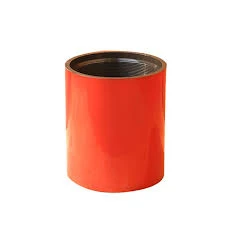- Afrikaans
- Albanian
- Amharic
- Arabic
- Armenian
- Azerbaijani
- Basque
- Belarusian
- Bengali
- Bosnian
- Bulgarian
- Catalan
- Cebuano
- Corsican
- Croatian
- Czech
- Danish
- Dutch
- English
- Esperanto
- Estonian
- Finnish
- French
- Frisian
- Galician
- Georgian
- German
- Greek
- Gujarati
- Haitian Creole
- hausa
- hawaiian
- Hebrew
- Hindi
- Miao
- Hungarian
- Icelandic
- igbo
- Indonesian
- irish
- Italian
- Japanese
- Javanese
- Kannada
- kazakh
- Khmer
- Rwandese
- Korean
- Kurdish
- Kyrgyz
- Lao
- Latin
- Latvian
- Lithuanian
- Luxembourgish
- Macedonian
- Malgashi
- Malay
- Malayalam
- Maltese
- Maori
- Marathi
- Mongolian
- Myanmar
- Nepali
- Norwegian
- Norwegian
- Occitan
- Pashto
- Persian
- Polish
- Portuguese
- Punjabi
- Romanian
- Russian
- Samoan
- Scottish Gaelic
- Serbian
- Sesotho
- Shona
- Sindhi
- Sinhala
- Slovak
- Slovenian
- Somali
- Spanish
- Sundanese
- Swahili
- Swedish
- Tagalog
- Tajik
- Tamil
- Tatar
- Telugu
- Thai
- Turkish
- Turkmen
- Ukrainian
- Urdu
- Uighur
- Uzbek
- Vietnamese
- Welsh
- Bantu
- Yiddish
- Yoruba
- Zulu
Understanding the Role of Casing Pup Joints in Oil and Gas Operations
Understanding Casing Pup Joints A Critical Component in Oil and Gas Operations
In the oil and gas industry, every component of the drilling and production process plays a vital role in ensuring operational efficiency and safety. Among these components, casing pup joints are essential fittings that facilitate the smooth and effective functioning of drilling operations. Understanding casing pup joints, their design, and their applications is crucial for professionals in the field.
What is a Casing Pup Joint?
A casing pup joint is a short piece of pipe used to adjust the length of the casing string in oil and gas well construction. It typically comes in various lengths, usually ranging from 2 to 10 feet, and is designed to fit seamlessly into the casing system. Casing pup joints are made from the same materials as the casing itself, which can include carbon steel or stainless steel, ensuring compatibility and strength.
Purpose and Applications
The primary purpose of a casing pup joint is to provide flexibility in adjusting the casing string's length
. During drilling operations and well completion, there may be instances when the predetermined length of the casing does not fit perfectly with the borehole depth. In these scenarios, a casing pup joint can be employed to bridge the gap. This adjustment is crucial for maintaining well integrity and preventing issues such as buckling or misalignment that can compromise the entire drilling process.casing pup joint

Casing pup joints are also beneficial in enhancing the overall functionality of the casing system. They can be used to facilitate specific operations, such as completing a well, installing production tubing, or accommodating various downhole tools. Moreover, they play a significant role in the installation of casing hangers and packers, ensuring a secure and reliable setup for fluid control.
Design and Specifications
The design of casing pup joints is critical to their effectiveness. They are available in various sizes and pressure ratings, allowing engineers to select the appropriate joint based on the specific requirements of the operation. The American Petroleum Institute (API) sets standardized specifications for casing pup joints, ensuring consistency and quality across the industry. Common specifications include API 5CT and API 6A, which dictate the materials, dimensions, and performance criteria of the joints.
The ends of casing pup joints are typically equipped with threaded connections, allowing for easy integration into existing casing strings. The threading process must adhere to strict tolerances to ensure a tight and secure seal, preventing leaks during well operations.
Conclusion
In summary, casing pup joints are a vital yet often overlooked component of oil and gas drilling operations. Their ability to provide flexibility in casing length and enhance the overall efficiency of well construction makes them indispensable. As the industry continues to evolve and demand for oil and gas increases, the design and application of casing pup joints will remain a focal point for engineers and operators alike. Understanding their specifications and proper usage is essential for ensuring safety and operational success in the challenging environment of oil and gas extraction. By mastering the intricacies of casing pup joints, industry professionals can contribute significantly to the seamless operation and longevity of drilling projects globally.
-
Tubing Pup Joints: Essential Components for Oil and Gas OperationsNewsJul.10,2025
-
Pup Joints: Essential Components for Reliable Drilling OperationsNewsJul.10,2025
-
Pipe Couplings: Connecting Your World EfficientlyNewsJul.10,2025
-
Mastering Oilfield Operations with Quality Tubing and CasingNewsJul.10,2025
-
High-Quality Casing Couplings for Every NeedNewsJul.10,2025
-
Boost Your Drilling Efficiency with Premium Crossover Tools & Seating NipplesNewsJul.10,2025







